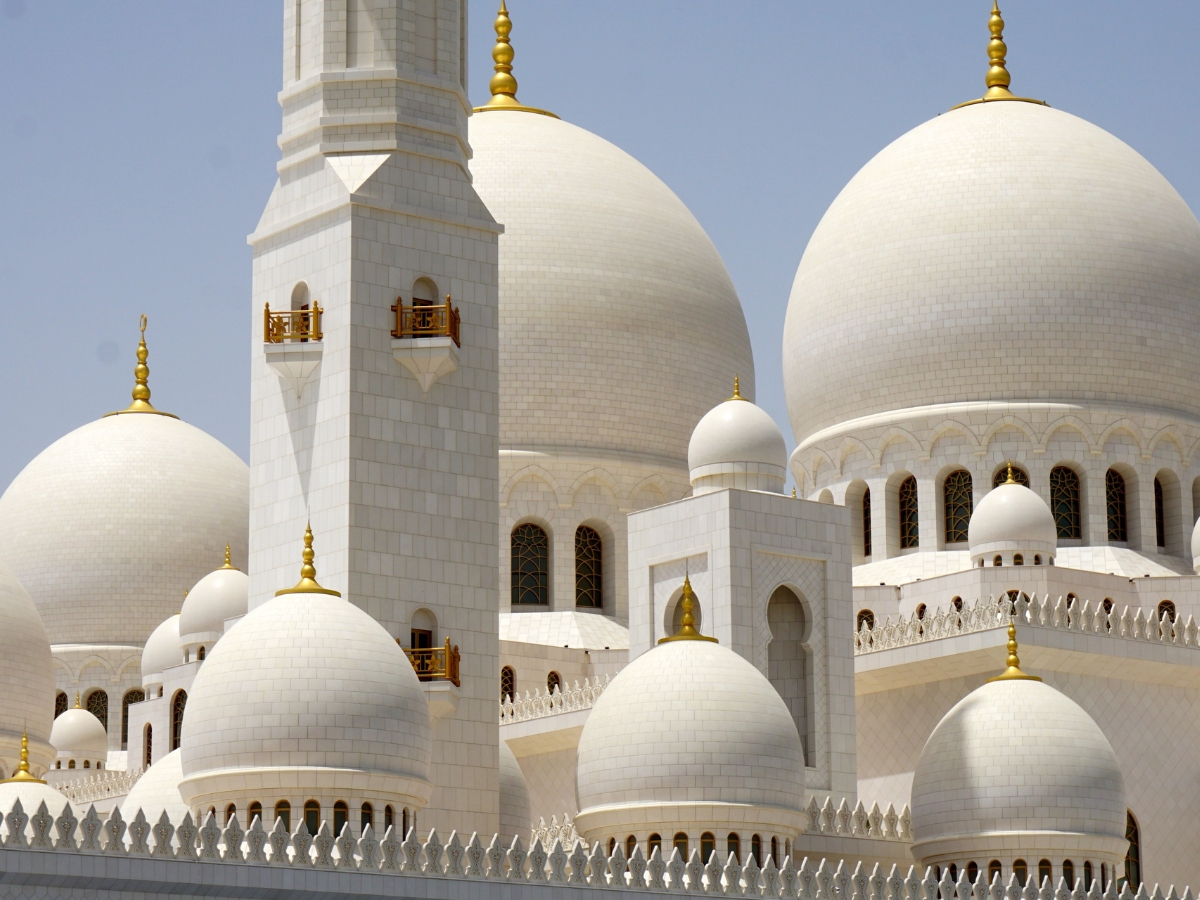Islamic modernism is an intellectual movement within the Islamic world that strives to reconcile traditional Islam with the realities of a rapidly changing world. Its advocates are keen to adopt modern technologies and ideologies as compatible with the Islamic faith and look to bridge the gap between the two. Islamic modernism has had a significant impact on Islamic thought, culture, and politics. It has seen a resurgence in recent years, allowing Islamic scholars and governments to update and modernize the interpretation of Islamic law. This has allowed for the introduction of more progressive policies in regards to gender equality, freedom of speech, personal rights, religious expression, and other aspects of modern life. Additionally, Islamic modernism has also opened up debates on previously taboo topics. As a result, Islamic modernism has been widely credited for paving the way for a more tolerant and opens Islamic society.
Islam is one of the oldest and fastest-growing religions in the world, with an estimated 1.8 billion followers worldwide. At its core are the Five Pillars of Islam – Shahada (Faith), Salat (Prayer), Zakat (Charity), Sawm (Fasting) and Hajj (Pilgrimage) – which serve as a guide to living a meaningful and fulfilling life according to Islamic teachings. But how do these pillars impact modern Islamic thought? In this blog post, we explore the profound influence that each pillar has had on shaping contemporary interpretations of Islam, from personal spirituality to social justice issues. Join us as we delve into the fascinating world of modern Islamic thought and discover how these ancient principles continue to shape our understanding of faith today!
The Five Pillars of Islam are the five religious obligations that all Muslims must fulfill.
They are:
- The profession of faith (shahada): “There is no god but God, and Muhammad is the Messenger of God.”
- Prayer (salat): Muslims must pray five times a day – at dawn, noon, afternoon, sunset, and evening.
- Almsgiving (zakat): Muslims must give 2.5% of their wealth to the poor and needy.
- Fasting (sawm): Muslims must fast from dawn to dusk during the month of Ramadan.
- Pilgrimage (hajj): Muslims must make a pilgrimage to Mecca at least once in their lifetime if they are able to do so financially and physically.

Islamic Modernism and Its Impact
As the world becomes increasingly interconnected, it’s important to understand the way different cultures and religions are evolving. Islamic modernism is one of the most fascinating developments in recent years, and its impact on both Muslim societies and global politics cannot be overstated. In this blog post, we’ll explore what exactly Islamic modernism is, how it has changed over time, and the ways in which it is transforming Muslim communities around the world. Whether you’re a student of religion or simply curious about how faith can shape society, read on to discover why Islamic modernism matters more than ever before!
What is Islamic Modernism?
Islamic modernism is a movement that began in the late 19th century as a response to the challenges posed by the modern world. It sought to reconcile traditional Islamic values with the needs of modern, industrial society.
Its proponents argued that Islam was compatible with democracy, socialism, and other progressive ideologies. They advocated for an Islamic state that would be tolerant of different religions and cultures.
The movement gained traction in the wake of World War I, when many Muslim countries were facing colonialism and Westernization. In the decades that followed, Islamic modernists made significant strides in education, science, and politics.
However, the rise of Islamic fundamentalism in the 1970s dealt a blow to the movement. Many Islamic modernists retreated from public life, and their ideas are no longer as influential as they once were.
Origins of Islamic Modernism
Islamic modernism is a movement that began in the late 19th century and continued into the 20th century. It advocated for a “reform” of Islam, seeking to bring it in line with modernity and democracy. The movement was led by scholars such as Jamal al-Din al-Afghani, Muhammad Abduh, and Rashid Rida.
The origins of Islamic modernism can be traced back to the West’s colonization of the Muslim world. In response to this, some Muslims began to advocate for a “reform” of Islam. They argued that Islam needed to be brought in line with modernity and democracy in order to compete with the West. This led to the rise of Islamic modernism.
The impact of Islamic modernism has been far-reaching. It has influenced subsequent movements such as Islamic feminism and Islamist extremism. It has also had an impact on the way Islam is practiced today, with many Muslims now incorporating aspects of democracy and modernity into their faith.
Key Figures of Islamic Modernism
There are a few key figures that are worth mentioning when discussing Islamic modernism and its impact. One such figure is Jamal al-Din al-Afghani (1838-1897). He was a political activist who advocated for the modernization of the Muslim world. He also critiqued Western imperialism and promoted Pan-Islamism, which called for Muslim unity against the West. Another key figure is Muhammad Abduh (1849-1905). He was a student of al-Afghani and went on to become the Grand Mufti of Egypt. He too advocated for the modernization of the Muslim world and worked to promote religious tolerance and social reform in Egypt. Finally, there is Rashid Rida (1865-1935). He was a student of both al-Afghani and Abduh. Rida was a prolific writer and thinker who promoted many of their ideas. He also criticized certain aspects of traditional Islam that he felt were holding back the Muslim world.
The Impact of Islamic Modernism
Islamic modernism is a movement that has its roots in the 18th and 19th centuries. It arose in reaction to the growing European influence on the Muslim world. Islamic modernists sought to engage with the wider world, while still remaining true to their Islamic faith.
One of the most important figures in Islamic modernism was Jamal al-Din al-Afghani. He was a strong advocate for independence from colonial powers and for reform within the Muslim world. He also believed that Muslims needed to embrace science and reason, and learn from the West without losing their own identity.
Other important Islamic modernists include Muhammad Abduh, Rashid Rida, and Fazlur Rahman Malik. These thinkers all promoted different aspects of modernity, but they all shared a commitment to reform within Islam.
The impact of Islamic modernism can be seen in many different spheres. One is politics: many Islamic countries achieved independence from colonial powers in the mid-20th century thanks in part to the efforts of Islamic modernists. In addition, Islamic modernism has helped to shape Muslim societies in places like Egypt, Turkey, and India. In these countries, Muslims have been able to preserve their religious identity while also participating in the modern world.
Criticism of Islamic Modernism
Islamic modernism has come under criticism from both Islamists and traditionalist Muslims. Critics charge that Islamic modernism is a Western import, and argue that it undermines Islamic values and traditions. They also argue that Islamic modernism is not truly Islamic, because it does not adhere to the teachings of the Quran and Hadith. Traditionalist Muslims also argue that Islamic modernism promotes a watered-down version of Islam, and that its proponents are not true Muslims.
Impact of Modern Islamic Thought on Muslim Societies
In recent years, Islamic societies have been undergoing a period of profound change. Modernity and globalization have led to the rise of new social and political forces within Muslim communities, resulting in the emergence of new Islamic schools of thought. While some Muslims have embraced modernity and sought to reconcile their faith with the values of the modern world, others have rejected it outright, preferring to return to a more traditional understanding of Islam.
The impact of modern Islamic thought on Muslim societies has been far-reaching. In many ways, it has served as a catalyst for change, sparking debates on everything from gender equality to the role of religion in politics. It has also helped to challenge traditional ideas about what it means to be a Muslim, opening up new possibilities for how Muslims can live their lives in today’s world.
In conclusion, Islamic modernism has been an influential force for many people throughout the Middle East. It can be seen as a reaction to colonial rule and westernization, as well as providing an alternative to more traditional interpretations of Islam. As such, its impact on the region cannot be denied; it has led to increased religious tolerance, economic development and improved gender roles. Although there are still some areas in which Islamic modernism could improve further, its ability to create positive change is undeniable.
